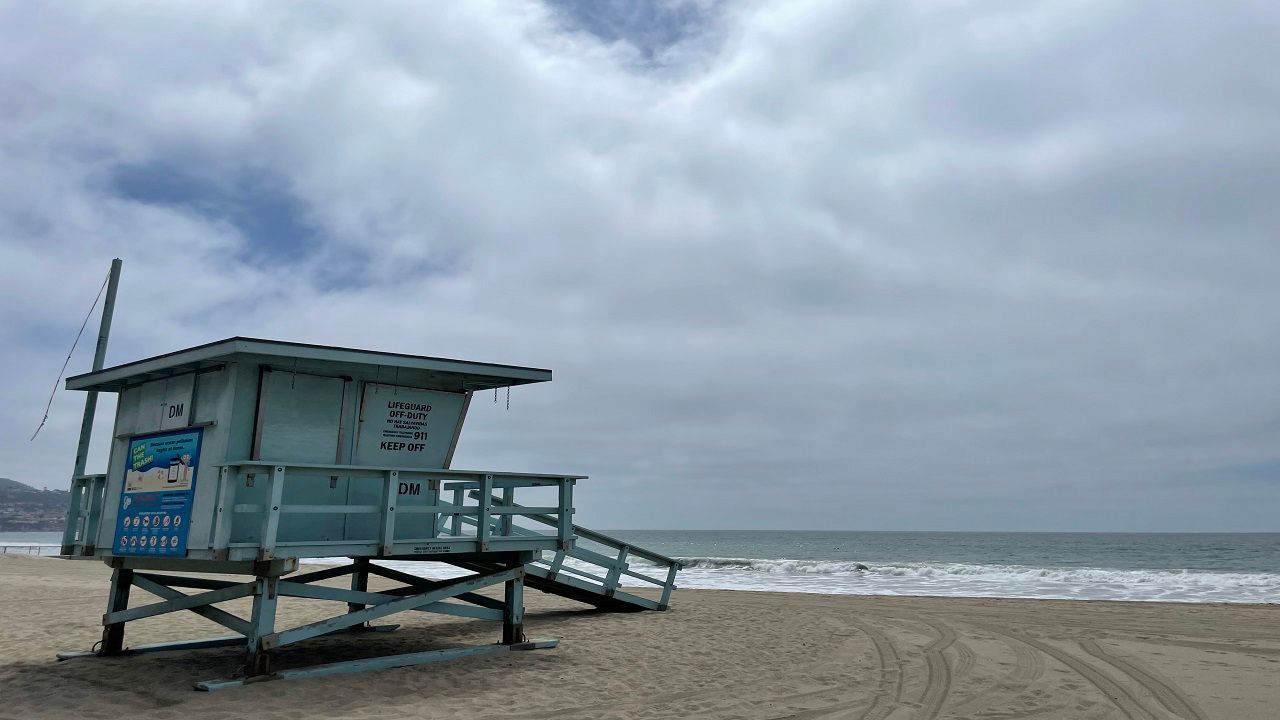LOS ANGELES — Two types of green technology have come together for a historic first in the race to decarbonize the Port of Long Beach.
The collaboration between California-based STAX and UK startup Seabound is designed to clean up air pollution and capture carbon dioxide straight from a ship’s exhaust.
Seabound handles the carbon capture side and its CEO Alisha Fredriksson says shipping is one of the last frontiers in the climate fight.
“It’s actually one of the final sectors that we don’t yet have viable solutions for, and that’s why it’s really exciting to be on the leading edge working in partnership with companies like STAX as well to develop brand new solutions that can hopefully accelerate maritime decarbonization,” said Fredriksson.
The system works by mounting a STAX unit on a barge, which directly connects to the exhaust of a docked ship.
STAX CEO Mike Walker says their equipment filters out harmful air pollutants like nitrogen oxide and particulate matter – while also capturing CO₂ - which is then routed through Seabound’s technology.
“We now have a system today that in six months you can have something in your port that gets you zero emissions,” said Walker.
Globally, shipping powers 90% of all trade—and contributes about 3% of the world’s greenhouse gas emissions.
The Port of Long Beach has long been a leader, reducing pollution and emissions.
Since adopting its Green Port Policy 20 years ago, the port has cut diesel soot by 92%, nitrogen oxides by 71%, and sulfur oxides by 98%.
CEO Mario Cordero says the STAX-Seabound demonstration brings the port even closer to its ultimate goal: zero emissions.
“That’s been our commitment since the Green Port Policy back in 2005 and we’ve made great strides so we look forward to accomplishing the zero emissions quest later this decade,” said Cordero.
The project is funded by the California Air Resources Board and the South Coast Air Quality Management District. CARB has already set tough rules for air pollutants at ports—but currently, there are no California requirements for reducing carbon emissions.
Alisha hopes that will change, and that California will follow in the footsteps of the International Maritime Organization, which is pushing for a 20% CO₂ reduction by 2030.
“I think the hope is that in California there might be demand, there might even be future policy that requires ship owners to reduce the co2 emissions while they’re in port as well,” said Fredriksson.
This demonstration shows it’s not just possible—but practical—for the shipping industry to clean up its air and help protect the planet.









